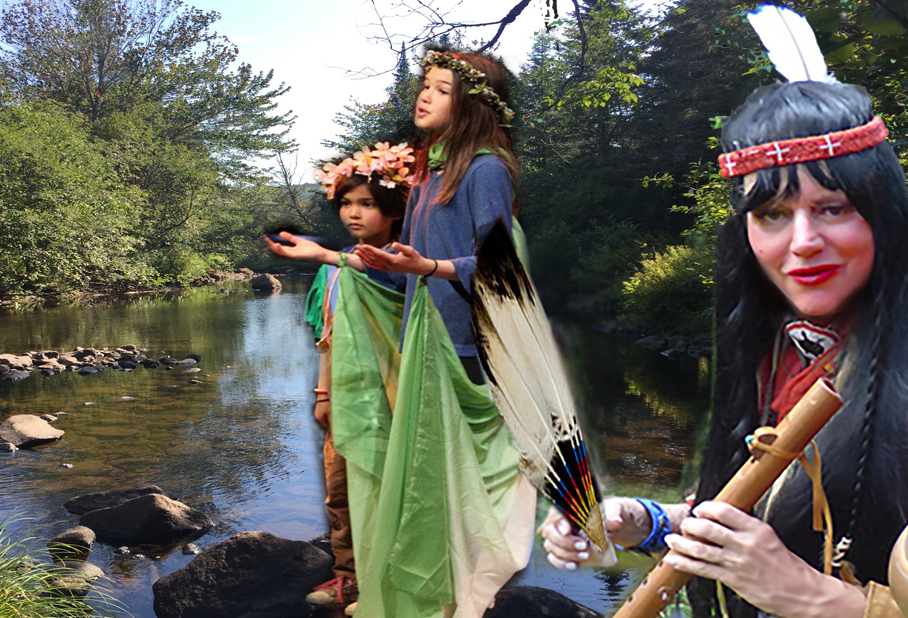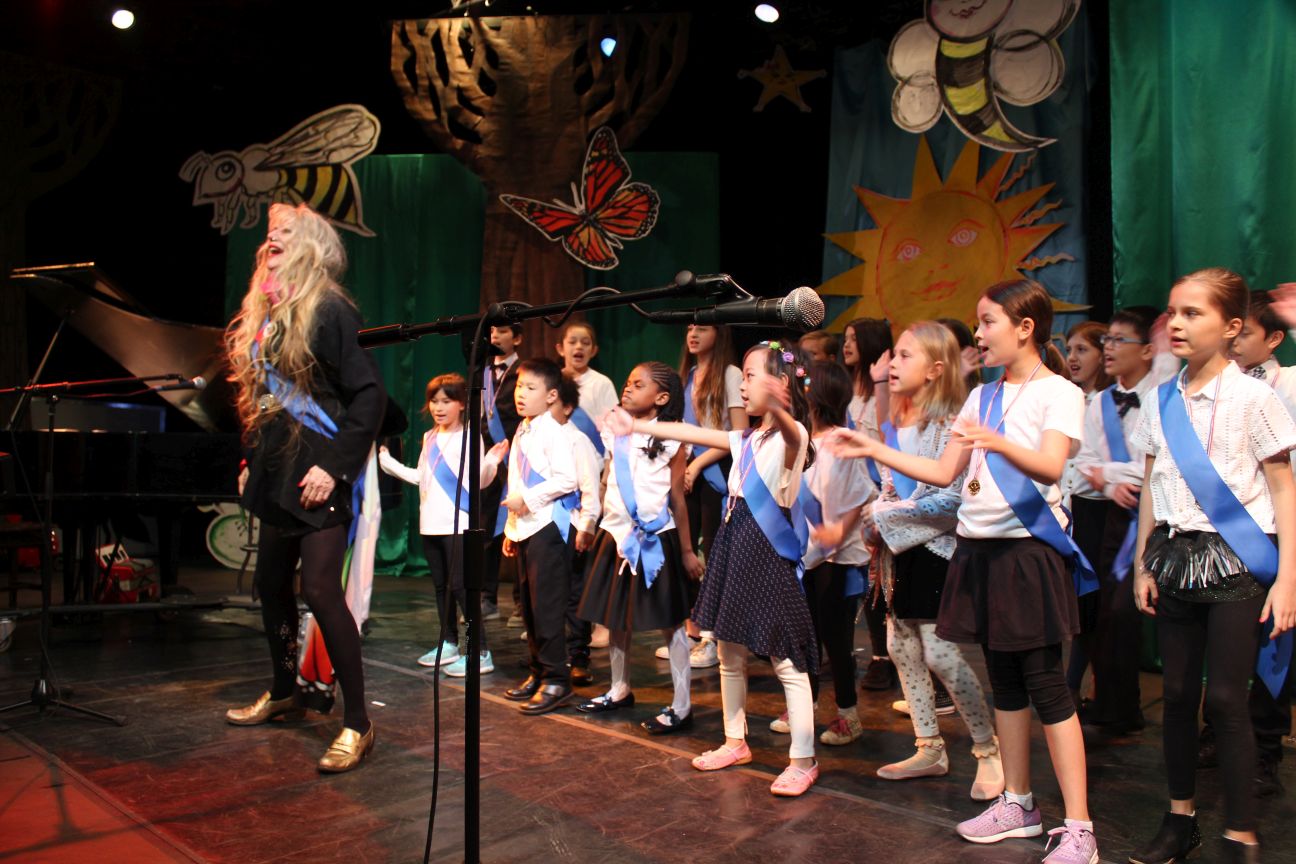Internationally known musician, composer, author and educator, Phoebe Legere, had a dream to restore Arts Education programs to underserved children in low-income communities.
While traveling the globe—from Tibet to Brazil to Micronesia—Legere worked with indigenous people and learned their crafts of building musical instruments from local woods, dried out gourds, tree branches, shells, and hollow bamboo culm.
Legere says, “A wooden instrument represents an organic return to the deepest sources of nature and creation. Traditional songs carry within them the seeds of survival, harmony and collective joy.”
In the process the scholar, and Juilliard-trained professional, (known for her collaborations with David Bowie, Joni Mitchell and Billy Joel, as well as her critically acclaimed full-length musicals, operas and Pulitzer-nominated musical poem, “The Waterclown”), discovered that instruments made from these natural, organic materials helped children embrace music.
“When you hear the sound of instruments made from wood–a fiddle, a cello, a wooden flute or a traditional accordion, you are hearing the soul of a tree. The tree is singing to you from another dimension,” says Phoebe Legere.

Following the economic collapse of 2008-09, eighty percent of U.S. school districts had their budgets cut. In 2010, a program called Common Core mandated guidelines to improve a students’ readiness for college and the workforce. Only STEM subjects (Science, Technology, Engineering, Math) would receive the majority of budgetary resources.
Says Legere, “Arts Education programs were the first to go. Approximately eighty-five percent of public schools in New York City have eliminated or drastically reduced art and music programs. But the Arts are not electives. They are essential.”
Legere took action. Her mission is to bring art and music to the children of low-income, at-risk, underserved communities. She is Founder and Executive Director of the Foundation for New American Art, a 501(c) 3 nonprofit corporation creating and supporting music and art afterschool programs.

A descendent of the Abenaki tribe in Maine and the Acadians of French-Canada, Phoebe is an authentic tradition keeper and is known to thousands of children by her Native American name: Phoebe Songbundle. She is a dynamic performer on eight instruments: guitar, accordion, piano, Native American flute, Buffalo drum, Spoons, Cello, and Cavaquinho. Legere is also a music teacher and scholar who follows the ancient tradition of teaching music as a spiritual discipline.
“Music made from traditional instruments with real, sustainable organic materials from Mother Earth, can reach right down into your soul and blow you away. Machines make most of the music we hear on the radio. It sounds like music, superficially, but it’s really a trick. It’s like a fast-food meal. It tastes okay at first, but is it really nourishing? Is it really making you stronger, healthier, and happier?”
Legere loves to teach children to play Native American flute. “I encourage them to imitate the sounds of nature! I tell them to ’Listen to the birds, the wind, the frogs, the crickets, the rain, and the intricate orchestra of nature.’ “
Says Legere, “Traditional music helps children to construct a healthy social identity in a safe space where they can express their deepest feelings. The antidote to the toxic stress of modern life is simple and free: the family that sings and dances together stays together.
“Music gives children an awareness of shape and structure, breathing and tone. Music teaches the young how to project, how to harmonize, how to follow a leader, and how to be a leader. Most importantly, music teaches children how to listen to their heart.”
Phoebe Legere’s 5 Tips to Inspire Any Child
- Sing to your child A baby in the womb loves music. His or her first musical experience is the sound of mother’s heartbeat. The swell and pulse of mother’s blood is like a symphony. Babies invent their own choreography in the womb, stretching, dancing, twisting, and listening to that most beautiful sound: the sound of mother’s voice. Listen to music together, share it, and let it fill your souls with shared beauty and harmony.
- Visit music venues The path to finding the perfect instrument can be a magical experience for you and your child. Go to music stores! Concerts! Name the instruments! Embrace beautiful sounds!
- Find a teacher who is fun, optimistic and loves children.
- Encourage your child to make up songs Young children have an astonishing ability to make up songs. Most children lose this gift after a few years in school. Encourage your child’s Imagination.
- Play music with your child Pick up a drum or a percussion instrument and play along with your child. Dance with your child. Sing with your child. Music is a potent force for intergenerational harmony. The human voice is the original traditional instrument!
Legere is the Conductor and Music Director for the Lower East Side Children’s Chorus. She is the President of the Foundation for New American Art. Legere is a Yaddo Fellow, currently writing a children’s musical about the environment and a book for Young Adults called, “How To Be A Better Singer in Five Minutes.” Phoebe gives 100 percent of the proceeds from her performances to this Foundation.

